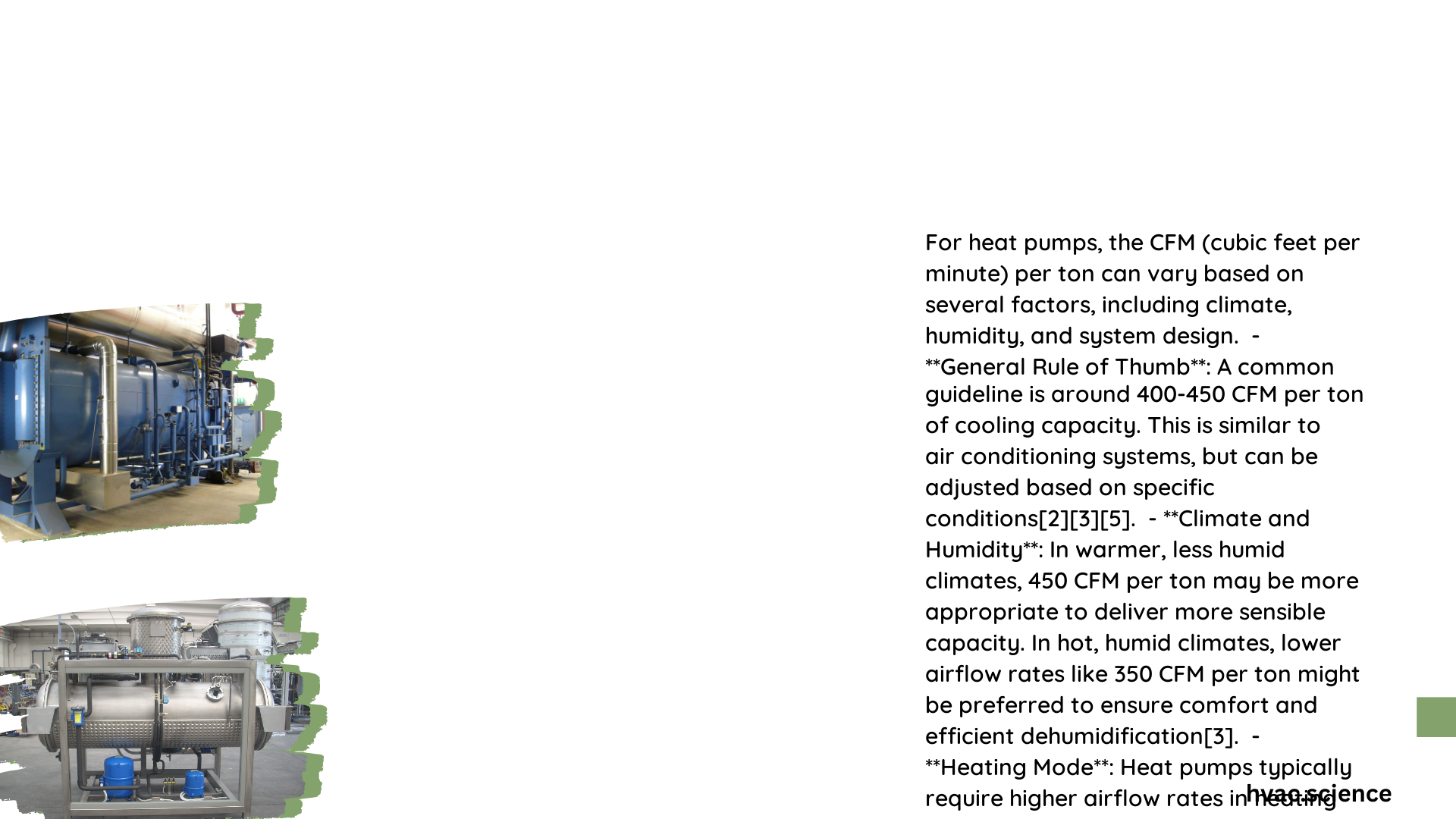Heat pump CFM (cubic feet per minute) per ton is a critical performance metric determining system efficiency, comfort, and energy consumption. Understanding the optimal airflow range of 350-400 CFM per ton helps HVAC professionals design, install, and maintain high-performance heat pump systems that deliver consistent temperature control and maximum operational efficiency.
What is Heat Pump CFM per Ton?
Heat pump CFM per ton represents the volume of air circulated through the system relative to its cooling or heating capacity. This crucial metric directly impacts system performance, energy consumption, and overall comfort levels.
Key Factors Influencing CFM per Ton
| Factor | Impact on CFM |
|---|---|
| System Capacity | Determines base CFM requirements |
| Temperature Differential | Affects airflow calculation |
| Ductwork Design | Influences actual air circulation |
| Climate Conditions | Modifies optimal airflow range |
How to Calculate CFM per Ton?

Calculation Formula
The standard formula for determining heat pump CFM involves multiple variables:
[ \text{CFM} = \frac{\text{Total BTUH}}{\Delta T \times 1.08} ]
Practical Calculation Example
- System Capacity: 3-ton heat pump
- Total BTUH: 36,000
- Temperature Difference: 25°F
Calculated CFM: Approximately 1,333 CFM
Recommended CFM Ranges
- Residential Systems: 350-400 CFM per ton
- Commercial Applications: May vary based on specific requirements
- High-Efficiency Systems: Potentially lower CFM with advanced technologies
What Challenges Affect CFM Performance?
Critical Considerations
- Ductwork Integrity: Proper sizing and minimal resistance
- Static Pressure: Optimal range typically 0.5-0.8 inches water column
- Equipment Compatibility: Matching air handler and heat pump specifications
Why Precise CFM Matters
Performance Implications
- Energy Efficiency: Correct airflow reduces system strain
- Comfort Levels: Consistent temperature distribution
- Equipment Longevity: Reduced mechanical stress
- Operational Cost: Lower energy consumption
Best Practices for Optimal CFM
Professional Recommendations
- Conduct comprehensive load calculations
- Use professional-grade measurement tools
- Consider seasonal variations
- Regular system maintenance
- Verify manufacturer specifications
Technical Nuances
Advanced Considerations
- Variable Speed Systems: Dynamic CFM adjustment
- Zoned HVAC Configurations: Customized airflow management
- Climate-Specific Design: Regional performance optimization
Measurement and Verification
Diagnostic Techniques
- Digital Airflow Meters
- Thermal Anemometers
- Pressure Differential Gauges
Professional Insights
Heat pump CFM per ton is not a one-size-fits-all metric. Professional HVAC technicians must consider multiple variables, conduct precise measurements, and understand system-specific requirements to achieve optimal performance.
Expert Tip
Always prioritize manufacturer guidelines and local building codes when determining heat pump CFM per ton configurations.
Emerging Technologies
Future of Airflow Management
- Smart sensors
- AI-driven optimization
- Predictive maintenance algorithms
Conclusion
Mastering heat pump CFM per ton requires technical expertise, precise calculations, and a holistic understanding of HVAC system dynamics.
References:
- https://hvac-blog.acca.org/hey-ed-what-is-the-correct-cfm-per-ton-on-a-heat-pump/
- https://www.greenbuildingadvisor.com/question/central-air-heat-pump-sizing-via-tons-vs-cfm
- https://www.bpa.gov/-/media/Aep/energy-efficiency/residential/residential-ptcs-essentials/ptcs-esp-cfm-lookup-tables-final.pdf
